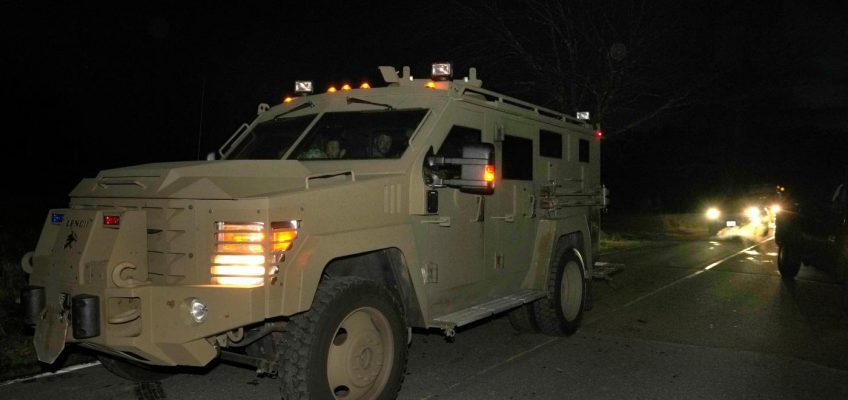Israelis, diaspora Jewry and friends of Israel everywhere need to understand that the way Israel is fighting the war in the Gaza Strip today is laying the groundwork for a fundamental recasting of how Israel and Jews will be seen the world over.
It won’t be good. Police cars and private security at synagogues and Jewish institutions will increasingly become the norm; Israel, instead of being seen by Jews as a safe haven from antisemitism, will be seen as a new engine generating it; sane Israelis will line up to immigrate to Australia and America rather than beckon their fellow Jews to come Israel’s way. That dystopian future is not here yet, but if you don’t see its outlines gathering, you are deluding yourself.
Fortunately, more and more retired and reserve duty Israeli air force pilots, as well as retired army and security officers, are seeing this gathering storm and declaring they will not be silent or complicit in Israeli Prime Minister Benjamin Netanyahu’s ugly, nihilistic policy in Gaza. They have begun to urge Jews in America and elsewhere to speak up — SOS: Save Our Ship — before the widening moral stain of Israel’s military campaign in Gaza becomes irreversible.
The back story
First, the back story: Israel months ago destroyed Hamas as an existential military threat. Given that, the Netanyahu government should be telling the Trump administration and Arab mediators that it’s ready to withdraw from Gaza in a phased manner and be replaced by an international/Arab/Palestinian Authority peacekeeping force — provided that the Hamas leadership agrees to return all remaining living and dead hostages and leave the strip.
If instead, though, Israel goes ahead with Netanyahu’s vow to perpetuate this war indefinitely — to try to achieve “total victory” over every last Hamasnik, along with the far right’s fantasy of ridding Gaza of Palestinians and resettling it with Israelis — Jews worldwide better prepare themselves, their children and their grandchildren for a reality they’ve never known: to be Jewish in a world where the Jewish state is a pariah state — a source of shame, not of pride.
Because one day, foreign photographers and reporters will be allowed to go into Gaza unescorted by the Israeli military. And when they do, and the full horror of the destruction there becomes clear to all, the backlash against Israel and Jews everywhere could be profound.
Hamas has always been a cancer
Do not confuse my warning to Israel for a shred of understanding for what Hamas did on Oct. 7, 2023. Hamas invited the Israeli response with its own mass killings of Israeli parents in front of their children, children in front of their parents, by kidnapping grandmothers and murdering kidnapped children. What society in the world would not see its heart grow cold by such brutality? Hamas deserves to be eliminated; Hamas is and always has been a cancer on the Palestinian people, let alone Israelis.
But as a Jew who believes in the right of the Jewish people to live in a secure state in their biblical homeland — alongside a secure Palestinian state — I am focused right now on my own tribe. And if my own tribe does not resist this Israeli government’s utter indifference to the number of civilians being killed in Gaza today — as well its attempt to tilt Israel into authoritarianism at home by moving to sack its independent attorney general — Jews everywhere will pay dearly.
Voices of Israeli air force pilots
Don’t just take that warning from me. Last week two respected former Israeli air force pilots, Brig. Gen. Asaf Agmon and Col. Uri Arad (who was a prisoner of war in Egypt during the October 1973 war), published an open letter in Hebrew in the Israeli newspaper Haaretz, addressed to their colleagues still serving in the air force. Both men are members of Forum 555 Patriots, an impressive group of around 1,700 Israeli air force pilots, some retired and some still serving as reservists, which originally formed to resist Netanyahu’s efforts to undermine Israeli democracy with a judicial coup.
A Forum 555 leader, retired Israeli air force helicopter pilot Guy Poran, sent me Agmon and Arad’s letter to see if I could get it published as a Times Opinion guest essay. I told them I wanted to publish an excerpt myself. They wrote:
“We do not seek to downplay the monstrous nature of the massacre committed by Hamas terrorists on that cursed Saturday. We believe the war was fully justified. …
“However, as the war in Gaza dragged on, it became clear that it was losing its strategic and security purposes and instead served primarily the political and personal interests of the government. It thus became an unmistakably immoral war, and increasingly appeared to be a war of revenge. …
“The Air Force has become a tool for those, in government and even in the military, who claim that there are no innocent people in Gaza. … Recently, a member of the Knesset even boasted that one of the government’s achievements is the ability to kill 100 people a day in Gaza without anyone being shocked.
“In response to such statements, we say: As horrific as the Oct. 7 massacre was, it does not justify complete disregard for moral considerations or the disproportionate use of deadly force. We do not want to become like the worst of our enemies.
“The climax came on the night of March 18, with the resumption of war after the Israeli government knowingly chose to violate the agreement for the return of hostages. In a deadly airstrike intended to kill several Hamas commanders (reports vary on whether there were dozens or fewer), a new record was set. The munitions dropped by Air Force pilots on the target killed approximately 300 people, including many children. No satisfactory explanation has been given so far for the horrifying outcome of the attack.
“Since then, the Air Force has continued its relentless strikes on Gaza. … Entire buildings with children, women, and civilians are bombed — ostensibly to eliminate terrorists or destroy terror infrastructure. Even if some targets are legitimate, the disproportionate harm to uninvolved civilians cannot be denied. …
“This is a moment of reckoning. It is not too late. We call on our fellow active duty pilots: Do not continue to avoid asking questions. … Because you are the ones who will have to bear the moral consequences of your actions for the rest of your lives. You will have to face your children and grandchildren and explain how such unimaginable destruction occurred in Gaza, how so many innocent children perished by the deadly killing machine you piloted.”
And more …
Just a few hours after I got the letter, Nimrod Novik, a senior foreign policy adviser to former Israeli Prime Minister Shimon Peres, sent me another open letter, dated June 8. This one was from Commanders for Israel’s Security, urging Jewish diaspora voices to speak up against the madness in Gaza before they too are consumed by it. It read, in part:
“As Commanders for Israel’s Security, a movement of over 550 retired senior officials from Israel’s defense, security and diplomatic services, our lifelong mission has been to secure the future of Israel as the strong, democratic home of the Jewish people. … Recent events have led to passionate and sometimes painful debates within Jewish communities worldwide, particularly regarding the situation in Gaza. Many in the diaspora have voiced concerns publicly. Consequently, some have faced harsh criticism. Accused of weakening Israel or betraying their connection to the Jewish state, they are told that those who live abroad or do not serve in the I.D.F. must keep silent. We categorically reject the notion that Jews in the diaspora must remain silent on matters concerning Israel. … To those who fear that public criticism undermines Israel, we say that open, honest dialogue only reinforces our democracy and our security.”
First, Amen …
I have three reactions to these open letters:
First, Amen.
Second, this is what being pro-Israel really sounds like.
Third, it is time for a similar movement calling out Hamas’ vile excesses, led by those who support Palestinian statehood and a peaceful resolution in Gaza.
No one should accept Hamas prolonging this war to keep itself in power. Nothing would do more to pressure Hamas to accept a ceasefire than to be denounced across the world, on college campuses and in high-profile demonstrations from those who have been giving this hate-driven organization a free pass. This is what being pro-Palestinian really sounds like.
Thomas Friedman writes a column for the New York Times.




